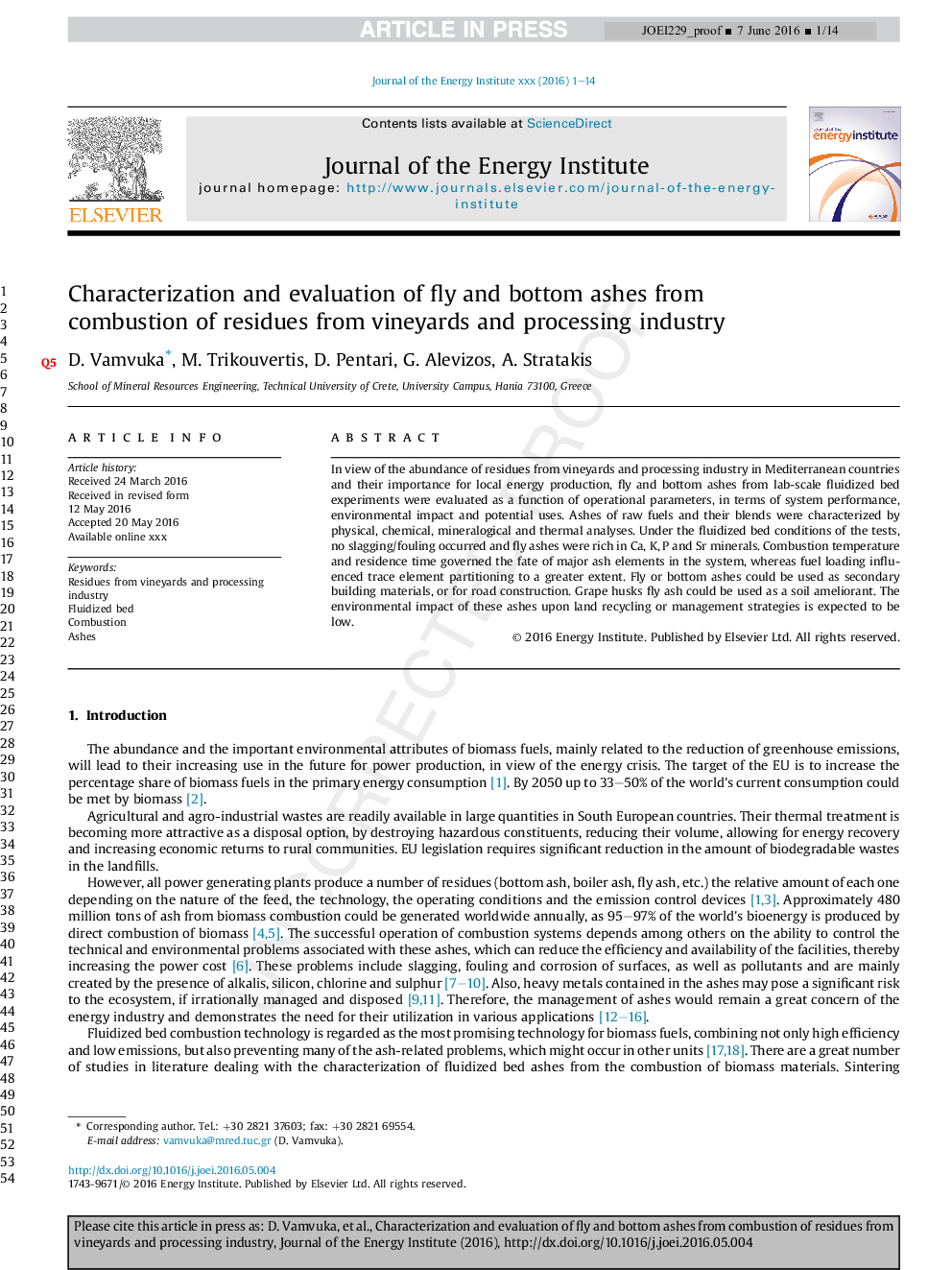| Article ID | Journal | Published Year | Pages | File Type |
|---|---|---|---|---|
| 8109003 | Journal of the Energy Institute | 2017 | 14 Pages |
Abstract
In view of the abundance of residues from vineyards and processing industry in Mediterranean countries and their importance for local energy production, fly and bottom ashes from lab-scale fluidized bed experiments were evaluated as a function of operational parameters, in terms of system performance, environmental impact and potential uses. Ashes of raw fuels and their blends were characterized by physical, chemical, mineralogical and thermal analyses. Under the fluidized bed conditions of the tests, no slagging/fouling occurred and fly ashes were rich in Ca, K, P and Sr minerals. Combustion temperature and residence time governed the fate of major ash elements in the system, whereas fuel loading influenced trace element partitioning to a greater extent. Fly or bottom ashes could be used as secondary building materials, or for road construction. Grape husks fly ash could be used as a soil ameliorant. The environmental impact of these ashes upon land recycling or management strategies is expected to be low.
Keywords
Related Topics
Physical Sciences and Engineering
Energy
Energy Engineering and Power Technology
Authors
Despina. Vamvuka, Marios. Trikouvertis, Despina. Pentari, George. Alevizos, Antonios. Stratakis,
